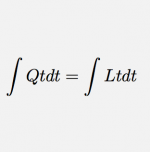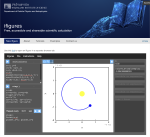Three-Body Problem at High e = Simple Pendulum
Cool new results by Ygal Klein:
Three-body systems - three masses moving under their mutual gravitational attraction, such as the Earth-moon-sun system pose a long standing problem since the days of Newton. One of the recent realizations is that very close approaches of two of the bodies are rather common in such systems, whith the inner orbit approaching very high ellipticity (eccentricity approaching one). Ygal has now showed that for a large fraction of the relevant parameter space, the long term dynamics is mathematically equivalent to a simple pendulum and can be solved simply, and analytically, to an excellent approximation.





